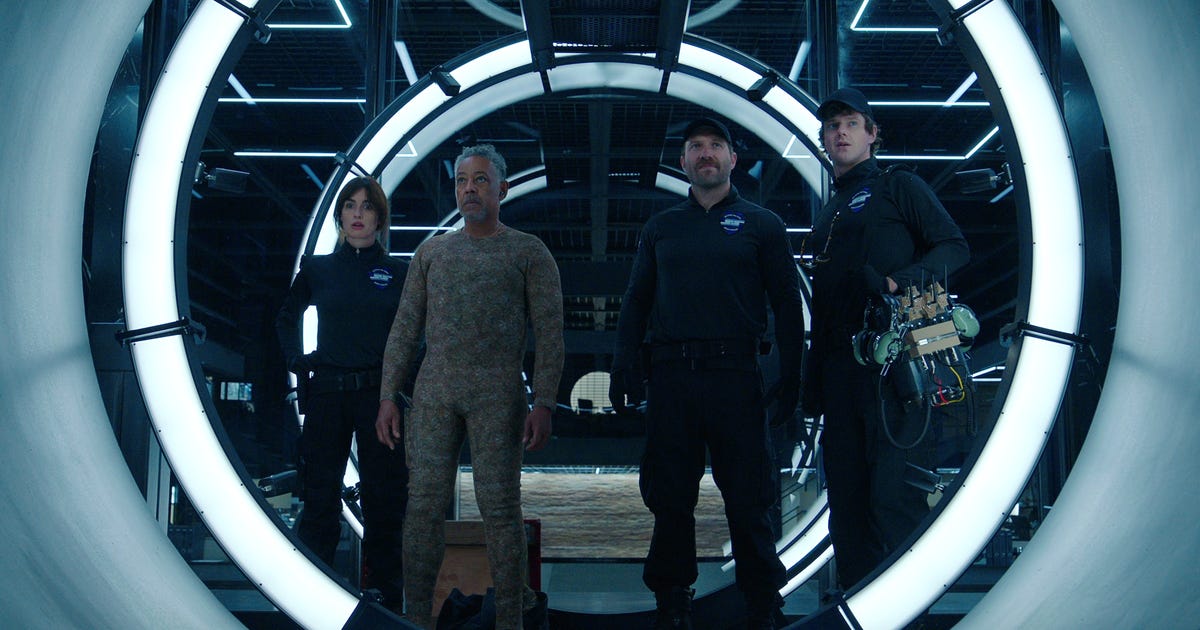The best gold ira, the best order to introduce letters, the best order to watch marvel movies, what is the best order to read the bible, what is the best order to watch jujutsu kaisen, what are the best starting words for wordle, mouse traps that work the best, what is the best order to watch star wars, what s the best order to draft in fantasy football.

To a certain extent, Kaleidoscope on Netflix is a frail heist story. It has all the regular beats: old grudges, team assembly, smaller missions that set up for the big one. But there's one key way Kaleidoscope differs from difference shows you might've seen. You can watch the episodes in any order.
The series dropped Jan. 1 and made it to the No. 1 TV show on Netflix shiny now. Without giving too much away, Giancarlo Esposito plays Ray Vernon (aka Leo Pap), the ringleader of a company plotting a multibillion-dollar job while settling an old acquire. Every episode tells a chunk of the story, focusing on Vernon's motivations, or the planning of the heist, or what unfolds in the aftermath. The segments come in whichever random order Netflix judges to deliver them to you (with the exception of the correct heist serving as the final episode).
This isn't the superior time Netflix has experimented with nonlinear storytelling. In 2018, Black Mirror: Bandersnatch offered a choose-your-own-adventure take on a film around a computer programmer. The following year, viewers got to make decisions for adventurer Bear Grylls in You vs. Wild.
Kaleidoscope's episodes are called for different colors, no doubt a nod to the series' name, but also a way to simply track what order you're watching and compare with friends. You aren't obligated to watch the way Netflix suggests. Here's what you need to know about how to see Kaleidoscope.
And if you've powered through and need some help sorting out what been, here's the ending explained.
Do I need to pick an order?
Not necessarily. If you hit play on the show, you'll see a shining primer on how it works, and then launch conventional into the episodes. They can come in any clean, with the exception of White, which is the heist itself, and is structured to be the series finale. That said, if you want to pick an clean for yourself, you can.
How do I watch it chronologically?
In the engaging of the show, I'm going to skimp on episode descriptions as not to corrupt anything. If you decide to watch Kaleidoscope chronologically, the episode clean goes like this, starting with a young Vernon 24 ages before the heist:
- Violet (24 years before the heist).
- Green (7 ages before).
- Yellow (6 weeks before).
- Orange (3 weeks before).
- Blue (5 days before).
- White (the heist).
- Red (the morning after).
- Pink (6 months after).
If you determine to go this route, however, know that any big finale twists will hit in the White episode.
Are there alternative ways to watch?
If everyone has been activities the math correctly, seven episodes, with no repeats, that can be viewed in any order should yield more than 5,000 options (there are even more options if you don't see White last). How many of those watch orders you want to try is between you and your calendar.
Netflix tweeted some clean suggestions, if you're interested in watching Kaleidoscope as a Quentin Tarantino film -- ostensibly a mention to nonlinear Tarantino films like Pulp Fiction -- (Blue, Green, Yellow, Orange, Violet, Pink, White, Red) or like a classic detective myth (Orange, Green, Violet, Red, Yellow, Blue, White, Pink).
You could go rogue and behind the colors of the rainbow (Red, Orange, Yellow, Green, Blue, Violet, Pink). Or, you could start with the big heist shiny off the bat, if you're feeling particularly rebellious.
What are viewers suggesting on social media?
Unsurprisingly, lots of folks are talking about the episode clean they chose and which order is the best.
How did you see it, person writing this article?
How thoughtful of you to ask. My clean, as dictated by Netflix, was:
- Green.
- Yellow.
- Violet.
- Orange.
- Blue.
- Red.
- Pink.
- White.
Oddly enough, my best friend's Netflix account gave her this accurate order. For me, this approach got off to a unblemished start, but having Orange and Blue, and then Red and Pink aimed two sets of episodes in chronological order, with relatively tiny time jumps in between. In that section, I could feel my care waning somewhat. Watching this show chronologically feels like missing the show. If I could go back and watch in a different clean, I'd bump up Red (but leave Pink where it is) and flip Yellow and Green, as I think Yellow would be the strongest episode to start.
So, like this:
- Yellow.
- Green.
- Violet.
- Orange.
- Red.
- Blue.
- Pink.
- White.
Source
